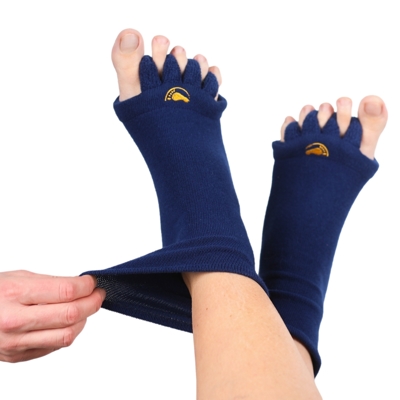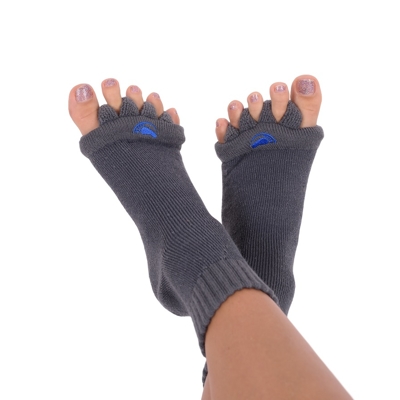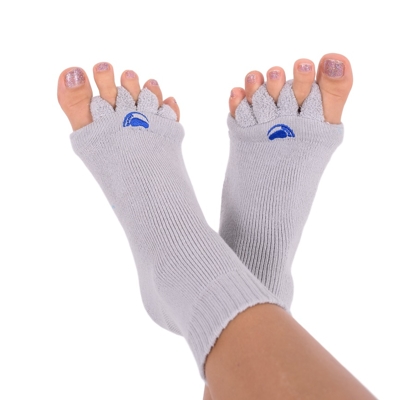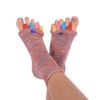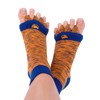Hallux comes in different forms. What forms exist and how can they be prevented?
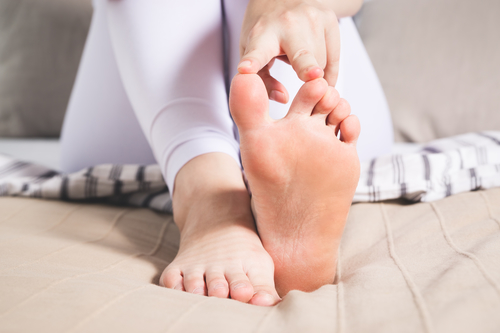
Hallux valgus, varus, rigidus. It sounds like a spell from Harry Potter, but most of us know that they are complications which affect the big toes. You might hear that you have a hallux. However, we all have this, because hallux is the Latin word for toe. What is important is the second part of the name, which indicates the type of deformity of the big toe we are talking about. Let’s look at hallux valgus, varus and rigidus and explain the difference between them and how to successfully fight medical complications such as these.
Hallux valgus
Hallux valgus or bunions is one of the most common foot deformities. It is a complication where the toe has been turned inward towards the other toes and the big toe joint protrudes and becomes swollen. It arises most frequently between the ages of forty and fifty and is caused by wearing inappropriate footwear. You can find a more detailed definition of this deformity in our article Why Are Bunions a Big Problem for Our Feet?

If you think that it is only an aesthetic defect or a deformity which involves only the big toe then you are wrong. Incorrect positioning of the big toe also causes problems in other bones, joints and ligaments in the foot. A bunion is accompanied by unpleasant pain and can lead to additional complications, such as flat feet. Not sure whether you have flat feet? Read about the most frequent symptoms of flat feet.
If a bunion is not dealt with in time, surgery could be required. This, however, may not be such a good solution. Are you suffering from hallux valgus but do not want to even talk about surgery? We have written a separate article about this. When fighting bunions, special exercises which relax your big toe, mobilise it and get the blood flowing to it can certainly help. Foot Alignment Socks have a similar effect on the toes and entire foot, and we also recommend them as support during treatment.
Hallux varus
Hallux varus, also known as sandal gap deformity, is the exact opposite deformity to hallux valgus. It is a less frequent complication which arises when the big toe is turned away from the remaining toes.
Hallux varus most frequently occurs as a result of neurological problems associated with the feet, as one of the complications after a procedure to correct hallux valgus. Dealing with a stiff big toe consists of rehabilitation or other procedures if they are unavoidable.
Hallux rigidus
The third type is hallux rigidus, also known as a stiff big toe, which occurs most frequently because of congenital dispositions in combination with frequent minor accidents in the area of the big toe. Arthrosis of the joint subsequently leads to a narrowing of the joint interstice and also a loss of cartilage on the joint surfaces, where growths form. This leads to stiffness and a general limitation on movement in the joint. The joint becomes especially limited in upwards movements, which, among other things, hampers ordinary walking. In addition to unpleasant pain, future stages produce visible painful growths below the skin and also sores on the skin’s surface.

Treatment can be done in two ways. The first is conservative treatment, which consists of rehabilitation, wearing of orthopaedic inserts, Foot Alignment Socks or prescribing anti-inflammatory drugs. If this course of treatment does not help and the illness worsens, surgery is necessary to treat the complication and correct the cause of the disease.
How to prevent the problem?
Regardless of which “hallux” you are suffering from, it is important to remember that the best solution to this and other medical complications is prevention. Prevention includes regular movement or sports activities, wearing suitable footwear, getting enough rest to recuperate, not overstressing the feet, and also wearing Foot Alignment Socks. Do you have yours yet?


